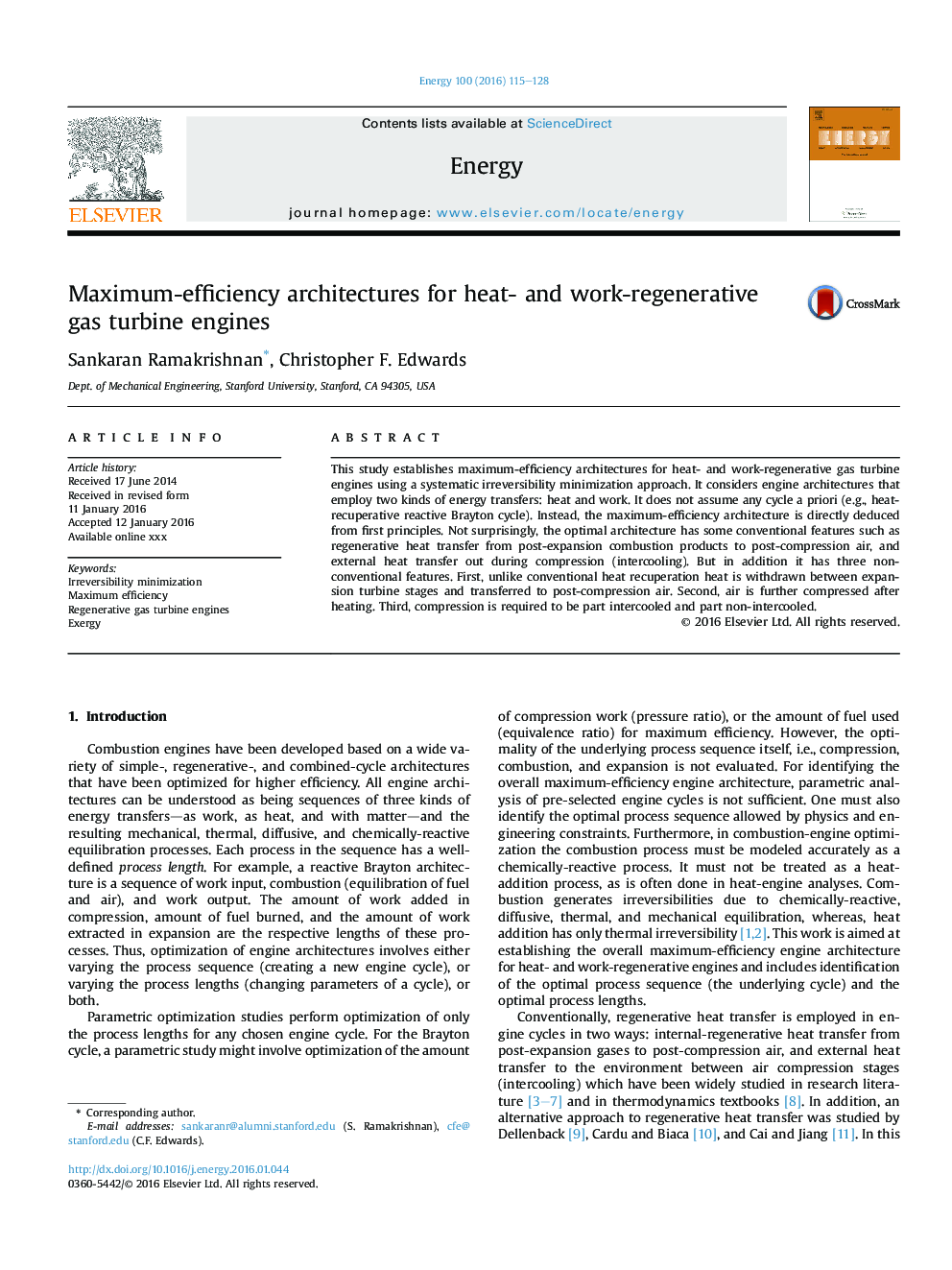| Article ID | Journal | Published Year | Pages | File Type |
|---|---|---|---|---|
| 8074142 | Energy | 2016 | 14 Pages |
Abstract
This study establishes maximum-efficiency architectures for heat- and work-regenerative gas turbine engines using a systematic irreversibility minimization approach. It considers engine architectures that employ two kinds of energy transfers: heat and work. It does not assume any cycle a priori (e.g., heat-recuperative reactive Brayton cycle). Instead, the maximum-efficiency architecture is directly deduced from first principles. Not surprisingly, the optimal architecture has some conventional features such as regenerative heat transfer from post-expansion combustion products to post-compression air, and external heat transfer out during compression (intercooling). But in addition it has three non-conventional features. First, unlike conventional heat recuperation heat is withdrawn between expansion turbine stages and transferred to post-compression air. Second, air is further compressed after heating. Third, compression is required to be part intercooled and part non-intercooled.
Related Topics
Physical Sciences and Engineering
Energy
Energy (General)
Authors
Sankaran Ramakrishnan, Christopher F. Edwards,
